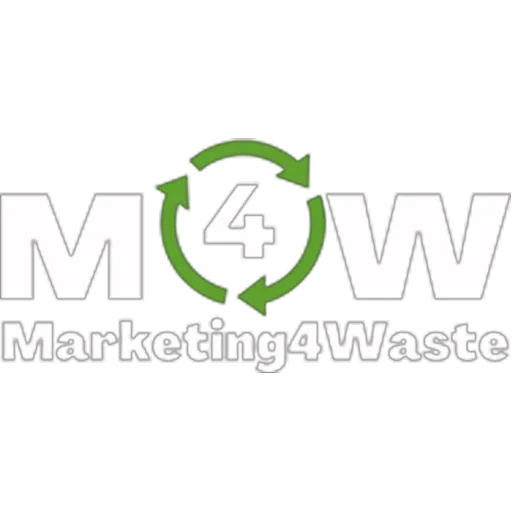Increase the Revenues of Your Waste Company With the Tips Shared in Our Blog Articles

From Trash to Treasure: How Secondary Raw Materials Can Revolutionize Your Waste Management Business
Let me ask you a simple question: How often do you think about the goldmine buried in your waste piles?
If your answer is "not often enough," then you’re leaving serious money on the table. As a waste management professional, you’re sitting on one of the most lucrative opportunities of the 21st century—secondary raw materials.
That’s right. What most people see as “trash” is actually the raw material for industries desperate for supply. And if you’re not leveraging this shift, you’re not just missing out—you’re handing over profits to your competition.
So let me be blunt: it’s time to shift your perspective. Stop thinking of yourself as a waste hauler. Start seeing yourself as a broker of valuable resources. Because the waste industry is no longer just about collecting garbage. It’s about turning that garbage into gold.
In this article, I’m going to break down how secondary raw materials can become your ticket to bigger margins, stronger client relationships, and a business model that thrives regardless of economic conditions.
[Download the eBook “Thriving With Waste”]
What Are Secondary Raw Materials, and Why Should You Care?
Before we dive in, let’s get clear on what we’re talking about. Secondary raw materials are resources extracted from waste that can replace virgin materials in manufacturing. Think metals, plastics, paper, and even rare earth elements. These aren’t just scraps; they’re the backbone of industries like construction, automotive, electronics, and packaging.
And here’s the kicker: demand for these materials is skyrocketing. Why? Because businesses are under pressure to cut costs and secure reliable supplies. Virgin resources are volatile and expensive, while secondary raw materials offer a stable, cost-effective alternative.
Now imagine positioning your business as the go-to supplier of these materials. It’s not just smart; it’s a game-changer.
[Download the eBook “Thriving With Waste”]
The Hidden Wealth in Your Waste Streams
If you’re like most waste management companies, you’re focused on collection and disposal. But here’s what the big players know: the real money isn’t in dumping waste—it’s in processing it.
Take metals, for example. Aluminum, steel, and copper are staples of the manufacturing world. Yet, every day, tons of these materials end up in landfills because waste companies fail to extract them. Aluminum from soda cans, copper from electrical wiring, and steel from old appliances are all begging to be reclaimed. Each pound you recover is pure profit waiting to be tapped.
The same goes for plastics. High-density polyethylene (HDPE) and polypropylene (PP) can be processed and sold back to manufacturers for use in everything from packaging to automotive parts. With the right sorting and processing equipment, you’re looking at an entirely new revenue stream.
Even paper and cardboard, often considered low-value, have immense potential. With the explosion of e-commerce, demand for recycled paper products is through the roof. That stack of boxes? It’s a paycheck waiting to happen.
[Download the eBook “Thriving With Waste”]
Why the Time Is Now
Let’s face it: the market is shifting. Geopolitical tensions, fluctuating commodity prices, and rising costs are forcing industries to rethink their supply chains. Manufacturers need reliable, cost-effective alternatives to virgin materials. And that’s where you come in.
But here’s the catch: this window of opportunity won’t stay open forever. Companies that position themselves as resource providers now will dominate the market tomorrow. The rest? They’ll be playing catch-up or worse—phased out entirely.
So, the question is: Are you ready to seize the moment, or will you let someone else reap the rewards?
[Download the eBook “Thriving With Waste”]
Three Steps to Start Profiting from Secondary Raw Materials
I’ve seen too many waste management companies stumble at this crossroads. They know the potential is there, but they don’t know where to start. So, let me lay it out for you—clear, actionable steps to transform your waste streams into revenue streams:
1. Audit Your Waste Streams
Start by taking a hard look at what you’re collecting. Identify materials that have high market demand and significant recovery potential. Metals, plastics, and paper are great starting points, but don’t overlook specialty materials like electronics and construction debris.
2. Invest in the Right Equipment
Sorting and processing secondary raw materials requires more than just a truck and a landfill. Consider investing in technologies like advanced sorting machines, shredders, and balers. These tools aren’t just expenses; they’re investments that pay for themselves in added revenue.
3. Build Strategic Partnerships
This is the linchpin. To maximize profits, you need buyers for your recovered materials. Reach out to manufacturers, brokers, and even other waste companies. Position yourself as their reliable supplier of high-quality, processed materials.
[Download the eBook “Thriving With Waste”]
The Numbers Don’t Lie
Still skeptical? Let’s talk numbers. A single ton of recycled aluminum saves 90% of the energy needed to produce it from raw ore. That’s not just an environmental talking point—it’s a massive cost saving that manufacturers are eager to tap into. And they’re willing to pay you for it.
Plastics? The global market for recycled plastics is expected to hit $72.6 billion by 2025. Even paper, often dismissed as low-value, is experiencing surging demand due to packaging needs. In short: the market is hungry, and you’re in the perfect position to feed it.
[Download the eBook “Thriving With Waste”]
Objections? Let’s Address Them
I can hear the pushback already:
“But Sam, isn’t processing expensive?”
Yes, there’s an upfront cost. But the ROI is undeniable. Once you’re set up, every ton of material you recover and sell adds directly to your bottom line.
“I don’t have the expertise to handle this shift.”
Fair enough. But that’s why you’re reading this. The expertise is out there, and resources like consulting services and industry masterminds can guide you every step of the way.
“What if the market changes?”
That’s the beauty of secondary raw materials. Unlike commodities tied to virgin extraction, these resources are resilient to market swings. Why? Because they’re derived from waste—a supply that never stops coming.
[Download the eBook “Thriving With Waste”]
The Waste Management Alchemist’s Final Word
Here’s the truth: The waste management industry is at a crossroads. You can cling to the old model of hauling and dumping, watching your margins shrink and your opportunities dry up. Or you can embrace the future—a future where you’re not just a collector of waste but a supplier of resources.
Secondary raw materials aren’t just an opportunity; they’re the opportunity. And the time to act is now.
As the Waste Management Alchemist, I’ve spent years helping companies like yours unlock the hidden potential in their operations. I’ve seen businesses double their revenue simply by shifting their mindset and seizing this goldmine.
The only question left is: Will you be next?
If you’re ready to take your waste management business to the next level, don’t hesitate. Let’s talk. Reach out today, and let’s start turning your trash into treasure.
To Your Success
Sam Barrili
The Waste Management Alchemist


© 2025 Marketing4waste - All Rights Reserved,
Marketing4Waste is a brand of MiM MarketingInterimManagers LLC
+1 801 804 5730

